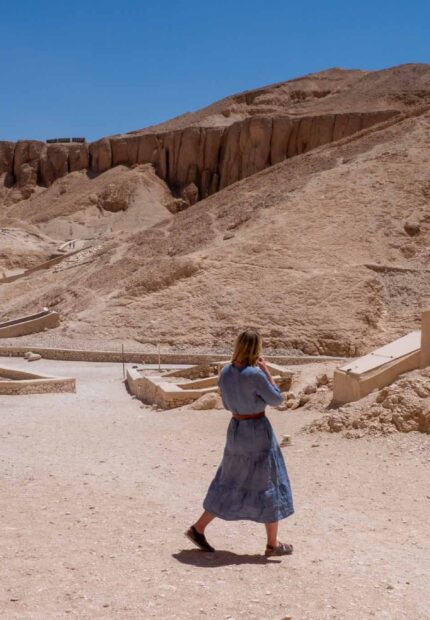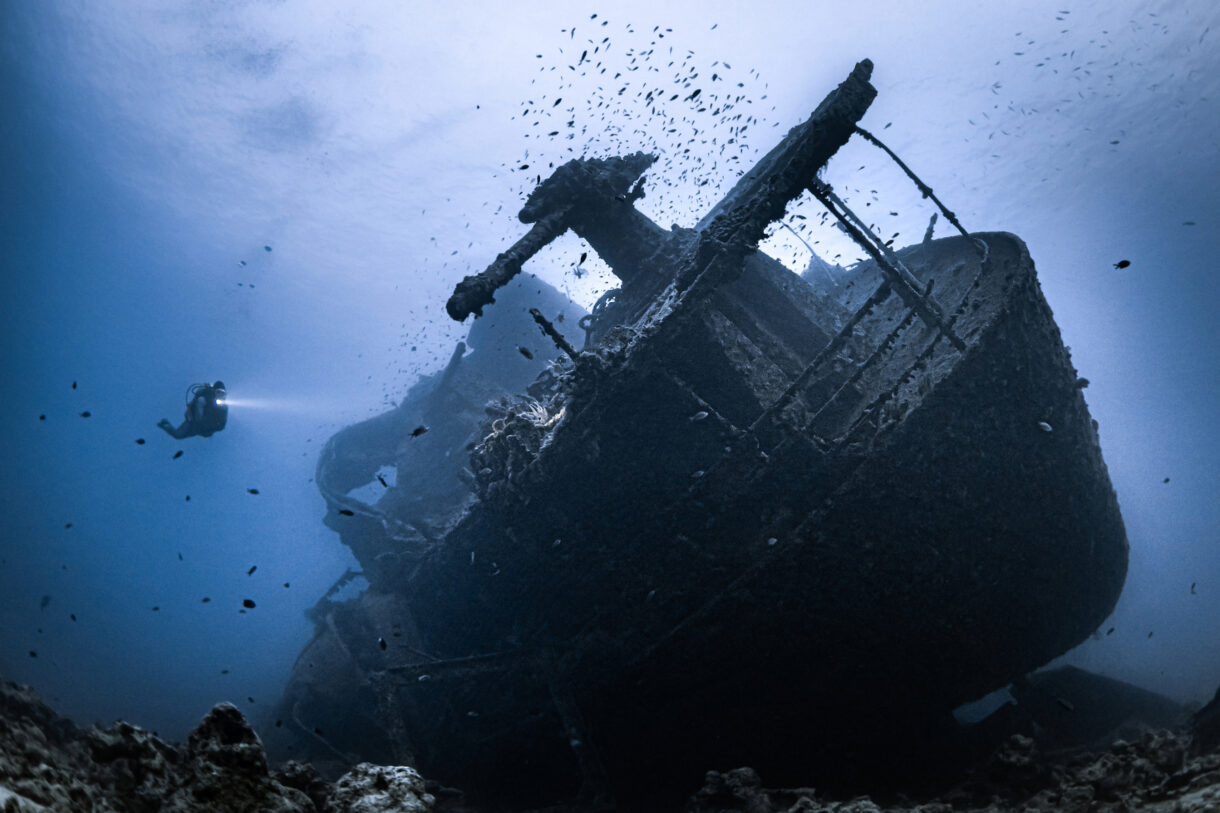
Diving Egypt’s Thistlegorm Wreck: the ULTIMATE guide
The Thistlegorm shipwreck is an iconic diving site in Egypt’s Red Sea. Anyone with a sense of adventure and an appreciation of history should add the Thistlegorm to their bucket list! But what is the Thistlegorm? What should you expect? It’s expensive compared to the rest of Egypt, is diving the Thistlegorm worth it?
In this blog post, we embark on a journey to uncover the wonders of this legendary shipwreck, delving into its history, what to expect, marine life, and the ultimate question: is diving the SS Thistlegorm worth it?
Ready? Let’s go!
In a rush? Jump to:
- Why go diving in Egypt
- What is the SS Thistlegorm?
- Where is the SS Thistlegorm located?
- A short history of the Thistlegorm Shipwreck
- Why dive the SS Thistlegorm?
- What to expect during your dive(s)
- Do I need an enriched air certification to dive the Thistlegorm?
- Booking your Thistlegorm trip & how much does it cost?
- What marine life will you encounter?
- Rules to follow for eco-friendly diving in Egypt
- And finally... is diving the Thistlegorm worth it?
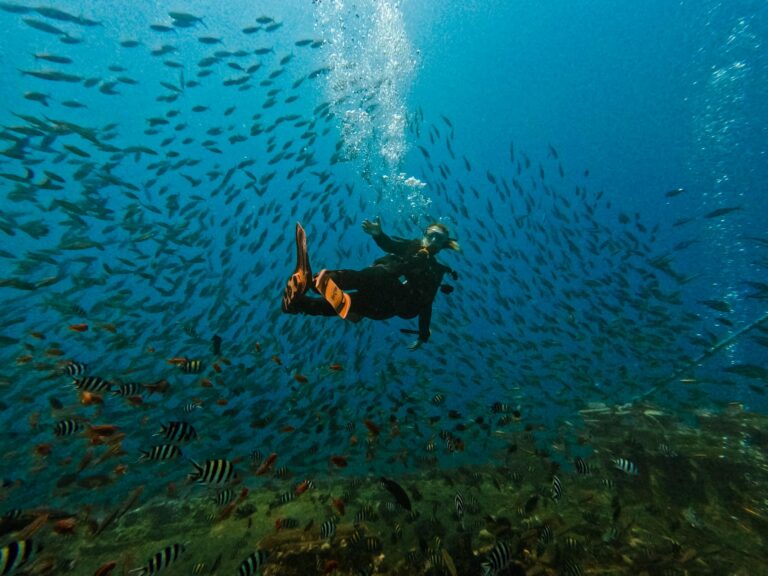
Diving the Thistlegorm Shipwreck
WHY GO DIVING IN EGYPT?
The Red Sea has beautiful coral reefs, fantastic dive sites, and a ton of marine life. And Egypt is a super cheap place to base yourself whilst you dive in and explore these!
With crystal-clear waters and exceptional visibility, the Red Sea offers optimal conditions for diving year-round, while Egypt’s well-developed dive tourism infrastructure ensures easy access to some of the world’s most pristine underwater landscapes.
Whether you’re captivated by historic wrecks like the Thistlegorm, hoping to spot a pod of dolphins or simply seeking to immerse yourself in the beauty of coral gardens, Egypt’s diverse dive destinations promise an unforgettable adventure for divers of all levels.
WHAT IS THE SS THISTLEGORM?
Located in the northern section of the Red Sea, the SS Thistlegorm is a 124-metre long British steamship from the Second World War. It was sunk in 1941 following a German air attack.
The SS Thistlegorm is listed by PADI as the world’s best wreck dive. And we totally agree, it’s incredible!
The maximum depth is ~30 metres (100 feet) at its deepest. This makes the wreck super accessible, you don’t need any special equipment or technical training. If you’ve got your Advanced Open Water qualification, you’re good to go!
Diving the Thistlegorm is an incredible glimpse into history. The ship’s cargo, including motorcycles, tanks, trucks, jeeps, radios, wellington boots and even a locomotive(!) can be seen inside and outside the wreck. Over time, this has become an artificial reef, with incredible marine life to see too.

Cargo, such as motorbikes and tanks, remain intact on the ship
WHERE IS THE SS THISTLEGORM LOCATED?
The SS Thistlegorm can be found in the Red Sea of the Sinai Peninsula in Egypt.
It’s right on the edge of the Ras Muhammad National Park, which makes it easily accessible from popular diving hubs like Sharm El Sheikh and Hurghada. You can also take day trips from the smaller, less touristy towns of Dahab and Marsa el Alam.
We sailed from Sharm El Sheikh. It was two to three hours of sailing on the fanciest dive boat I’ve ever been on. Seriously, the boat had three decks, a lounge area, a sundeck, and an indoor sitting area. So, if you get seasick (like me!), don’t worry, you’ll be grand!
A SHORT HISTORY OF THE THISTLEGORM SHIPWRECK
You’ll get more out of your wreck dives if you appreciate the history behind the site! The SS Thistlegorm, meaning “blue thistle” in Scottish Gaelic, was a British armed Merchant Navy ship built in 1940 during World War II.
In 1941, she was on her way from Glasgow, Scotland to deliver cargo to Alexandria, Egypt to aid in the war effort. Laden with supplies ranging from trucks and motorcycles to ammunition and weaponry, the SS Thistlegorm set off to Alexandria.
Due to German and Italian naval and air force activity in the Mediterranean, the Thistlegorm sailed the long way around, via the Cape of South Africa. There was a collision in the Suez Canal, so the SS Thistlegorm dropped anchor temporarily, to wait until the collision was resolved.
Unfortunately, she never made it to Alexandria. Two German aircraft had been dispatched to look for another troop carrier. They never found it, but they did find the SS Thistlegorm. They dropped two bombs which ripped through the stern of the ship.
The steam locomotives stored on the deck were blown off to either side. Luckily, the majority of the crew survived and were rescued by another ship, the HMS Carlisle, but most of the cargo remained within the ship and sank, still intact.
For decades, the SS Thistlegorm was forgotten beneath the waves, until its rediscovery in the 1950s by French explorer Jacques Cousteau. The shipwreck became popular as a recreational dive site in the early 1990s, around the same time Sharm el-Sheikh began to develop as a popular diving and resort area.

Views such as this can be seen from the dive ship
WHY DIVE THE SS THISTLEGORM
The SS Thistlegorm is listed by PADI as the world’s best wreck dive, and we have to agree, it’s pretty awesome!
Most divers opt for two dives here.The first to explore the outside of the shipwreck and appreciate its magnitude. You can see two huge cannons, the locomotives, which were blown off the ship, and the huge rip in the stern where the bombs were dropped. Over time, the wreck has become an artificial reef, and there’s a lot of interesting marine life. You may see schools of tuna, barracuda, turtles, dolphins, and more.
The second dive is to investigate the inside of the ship. Here, you can see and explore all of the incredible preserved cargo, including boots, radios, trucks, motorcycles, rifles, and tanks. The part of the ship that was ripped apart provides a good entrance to the interior. And it’s not too claustrophobic – you can almost always swim out if you’re feeling uncomfortable.
With most historical artefacts preserved in museums, it’s not very often that you have the chance to live a piece of history. But diving the Thistlegorm is like stepping back in time. It’s an unparalleled opportunity for divers to explore a remarkably preserved time capsule of the past.
If you’re travelling in Egypt and hold an Advanced OW Certification, you’re going to want to make space in your itinerary for the SS Thistlegorm dive. It’s totally worth it!
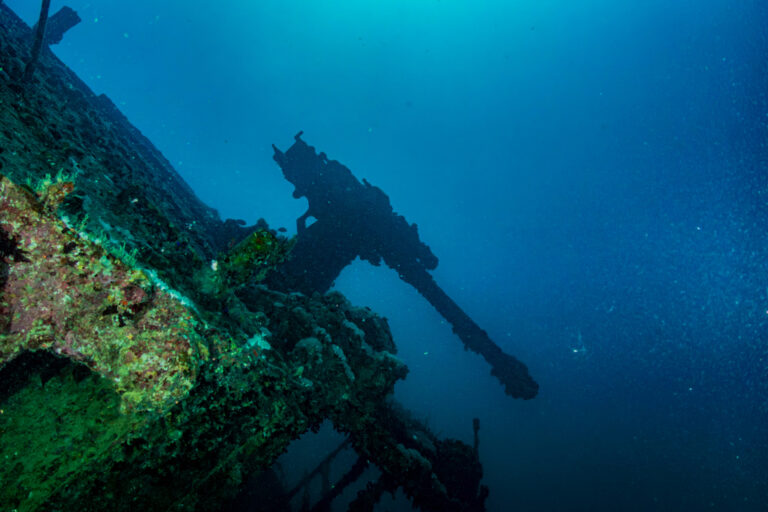
Guns on the exterior of the ship
DIVING THE THISTLEGORM: WHAT TO EXPECT?
So, I’ve convinced you. You’re going to dive the SS Thistlegorm. Yay! I’m so jealous, I’d love to a) be back in sunny Egypt and b) diving the Thistlegorm again! It’s one of those sites that feels like there’d always be more to discover.
Most trips to the SS Thistlegorm are a whole-day affair. They usually include three dives, two at the wreck itself, and one in the Ras Mohammed National Park, which breaks up the journey on the way back.
Descending into the depths surrounding the SS Thistlegorm is a surreal experience. The first dive is usually to explore the exterior of the wreck and get your bearings and on dive two, you’ll venture inside to check out all the cool cargo!
Note: The dive order might be switched! Your divemaster will assess the situation and arrange the dives in an order that will give you the best experience. If you’re lucky, this will mean that even on a busy day, you’ll get most of the dive to yourself/your group.
WHAT TO EXPECT: GETTING TO THE THISTLEGORM WRECK
The SS Thistlegorm is a popular day trip from most of Egypt’s popular diving towns. After arriving in Sharm el Sheikh or Hurghada, you’ll meet your dive group and divemaster. Then you’ll jump on a boat with multiple other dive groups, all of which have their own divemaster.
After that, you’ll set sail. The SS Thistlegorm is a two to three-hour boat ride from Sharm el Sheikh or Hurghada. The dive boats are huge, with lounge areas, sun decks… literally everything you could want! You’ll get your gear ready, and then it’s time to chill until you arrive. Grab some breakfast and find a good place to relax.
Once you arrive, you’ll dock literally on top of the Thistlegorm Shipwreck! After a quick briefing, it’s time to gear up and enter the water from the boat.
A short video: what to expect from your SS Thistlegorm dive
WHAT TO EXPECT: EXPLORING THE EXTERIOR
Getting off the dive ship and under the water was, for me, a little scary. The current is really strong on the surface, so you have to descend using a rope. This in itself is fine, but as you have to descend one by one, you might be left at the surface for a few minutes being pushed around by the current.
Just hold on, keep your mask on and your regulator in, and descend when given the signal by your dive master. You’ll be fine!
Once you’re about 5 metres (~15 feet) under the surface, the current is minimal, so you can begin to enjoy the views of the 120-metre-long shipwreck (~390 feet) opening up in front of you. You’ll descend to around 25-30 metres (~100 feet), then begin to explore the outside of the SS Thistlegorm wreck.
This is a good chance to orient yourself. You can see where the bombs tore through the hull, and swim right up to the two huge cannons on the deck. Over the last 80 years, the ship has become an artificial reef. Coral-encrusted ship parts provide refuge for schools of colourful fish darting among the wreckage.
After around 30 – 40 minutes, you’ll surface for a brief lunch pause.
WHAT TO EXPECT: INSIDE THE WRECK
Same as the first dive, you’ll enter the water and descend holding onto a rope. Once the current has calmed down, you’ll swim towards the part of the ship where the bombs landed. This is an easy and wide entry point to the inside.
As you enter the ship’s cavernous hull, you’ll start to explore a labyrinth of cargo holds filled with remnants of wartime cargo. From rusted trucks and motorcycles to crates of ammunition and artillery shells, each chamber holds a piece of history frozen in time.
Your divemaster will lead you through the cargo holds and rooms. You’ll swim fairly slowly, so you have plenty of time to look around and explore. It can be quite narrow at times, so be careful not to bump around too much – you run the risk of damaging the corals and maybe yourself too.
Note: if you’re claustrophobic, don’t worry! I am too. I was really nervous jumping in, but this dive is totally achievable. The outside dive is fine, and you can always see an exit from the cargo holds on the inside of the wreck. You can do it! I believe in you!
WHAT TO EXPECT: RAS MOHAMMED NATIONAL PARK
Most Thistlegorm packages include one dive in the Ras Mohammed National Park on the way back. Ras Mohammed is the centre of eco-friendly marine tourism in Sinai and the coral reef is pristine and teeming with life.
Any dive at Ras Mohammed will be a reef dive. The drift can be medium to strong, so after you jump in, it’s time to go with the flow. As a protected nature area, Ras Mohammed is an amazing place for wildlife spotting. We were incredibly lucky, and saw a turtle, a school of dolphins, and so many Moray eels! It’s a great reef dive to end the day with.
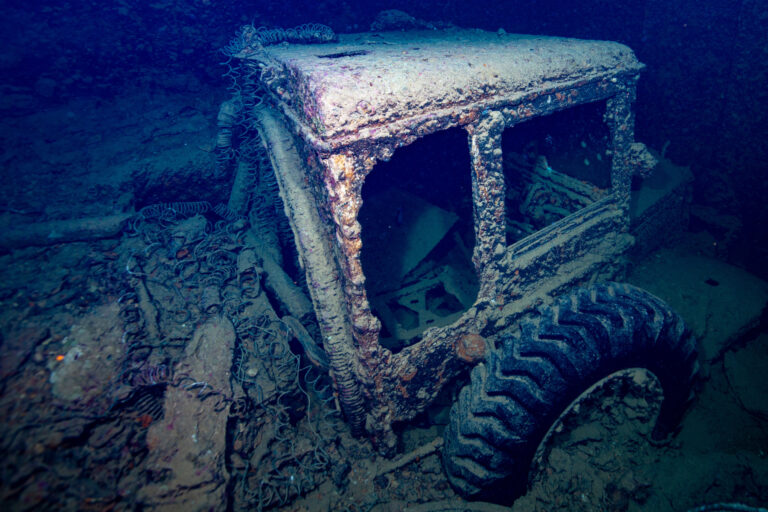
Old lorries and tanks can also be found inside the ship
DO I NEED A NITROX CERTIFICATION TO DIVE THE THISTLEGORM?
Enriched air, also known as nitrox or EANx, contains less nitrogen and more oxygen than regular air. Many dive centres will recommend a PADI enriched air certification. They’ll tell you that you need it to ‘get the most out of the Thistlegorm’.
If it’s been a while since you did your Open Water, here’s a reminder. When you dive, the pressure underwater causes nitrogen from the air in your tank to dissolve in your bloodstream and tissues. The higher the pressure, the more nitrogen dissolves. If you surface with too much nitrogen in your bloodstream, you can get decompression sickness. This is why we make a 3-minute safety stop before we surface (also I always see the coolest wildlife on the safety stop, it’s good fun!).
Enriched air means you’re breathing less nitrogen. This means you can enjoy a longer no-decompression limit, stay longer at depth and enjoy shorter surface intervals. You’ll also likely feel less tired afterwards. If you want to learn more about enriched air/nitrox diving, this is a really good place to start.
DIVING WITH NITROX: PROS AND CONS
Diving with enriched air sounds great, right? Let’s have a look at the pros and cons.
WHAT’S HOT
- You’ll get to enjoy longer time at depth and shorter surface intervals
- Shorter no-decompression limits so you can dive deeper over consecutive dives.
- Increased safety margins when diving within no-stop limits for air
- You may also feel less tired after diving with nitrox
WHAT’S NOT
- Cost: The certification itself is £180 (220 EUR, $237 USD) and dive centres may charge extra for enriched air tanks.
- You can’t dive as deep as you can with normal air because of oxygen toxicity at depth
- Availability: Not every dive shop or liveaboard offers enriched air
BUT DO YOU NEED NITROX TO DIVE THE THISTLEGORM?
Getting EANx certified will let you stay underwater longer. You can take more photos, swim with more fish, and spend more time exploring. However, nitrox will not change how much you breathe. Poor gas consumption may still cut your dives short.
Normally nitrox shortens your surface intervals too, but for the SS Thistlegorm dives, you’ll likely be diving with others who do not have this certification. You all have the same surface interval, so it doesn’t make much difference here.
Most people on our boat were diving with normal air, not nitrox. We did not choose to do the enriched air certification, and still had an incredible time on the SS Thistlegorm dives.
If you’re planning to dive the SS Thistlegorm as part of a liveaboard trip, you might wish to invest in the enriched air course. This will mean you can do more dives per day, and stay underwater for longer. It’ll help you really get the most out of your liveaboard trip.
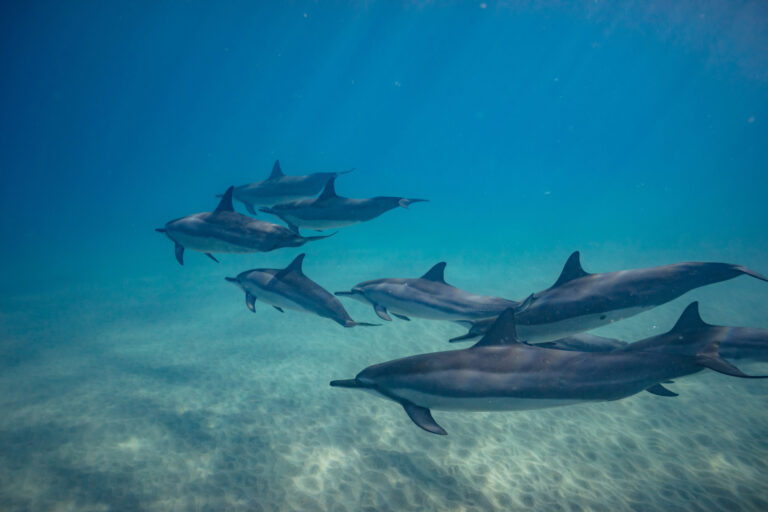
If you’re lucky, you’ll see dolphins!
HOW MUCH DOES DIVING THE SS THISTLEGORM COST?
As with any trip, the cost of diving the Thistlegorm can vary. This depends on:
- Where you set off from. Setting off from Sharm el Sheikh is cheapest. Setting off from Hurghada, Dahab, or Marsa Alam will be more expensive.
- How much equipment you need to hire.
- How large your group size is
We paid 220 EUR (£188 / $235 USD) for our trip to the SS Thistlegorm. This included:
- Three dives
- Transportation from Dahab to Sharm el Sheikh
- Boat transportation to the dive sites
- Full equipment rental
- Fees for the dive guide (we dived in a group of three people plus one guide)
- Breakfast, lunch, and snacks after each dive
This may seem steep, especially compared to diving elsewhere in Egypt, but it’s important to remember that this is a boat dive with two to three hours of sailing each way. You also get three dives, which comes down to 73 EUR per dive (£62 / $78 USD). I’ve paid a lot more per dive before, and this doesn’t seem like a bad price when you factor in your transport, food, and guide costs.
Let’s face it, the opportunity to explore one of the world’s most famous shipwrecks is truly a priceless experience. You might never come back to Egypt (there’s so much in the world to explore, after all) so if you can afford to dive the SS Thistlegorm, you should totally do it.
HOW TO BOOK A THISTLEGORM DIVE
You can book a Thistlegorm dive through literally any dive centre in Dahab and Sharm el Sheikh. Although we didn’t visit Marsa Alam, we reckon it would be just as easy to book from there too.
We found it so hard to organise anything in Egypt up front. Not many dive centres have websites to book things in advance. Even if you do manage to contact one, they don’t really take you seriously as a customer until you’re in front of them in person.
Don’t worry though. Egyptians are very hospitable and their customer service is excellent. If you arrive without pre-booking and want to dive, they’ll find a way to make that happen! So do your research, check the reviews, pick a dive centre and just turn up.
In the end, we decided to book all of our dives and our Thistlegorm trip through SlyDive, Dahab. They had a great website with a transparent and fair pricing structure. They were also very active on Instagram, where we were able to confirm that they had space for us.
It helped that I also knew someone who was volunteering there in exchange for diving experience. She was able to hook us up with free hostel pick up and drop off. Dahab is a small ish town, and it’s easily walkable. But it sure was nice to have that extra 30 mins of sleep, especially before the 4am Thistlegorm departure!
WHAT MARINE LIFE SHOULD YOU LOOK OUT FOR IN THE RAS MOHAMMED NATIONAL PARK
The marine life surrounding the Thistlegorm is as diverse as it is abundant.
Colourful reef fish such as angelfish, butterflyfish, and parrotfish flit around inside and outside the wreck, while larger predators like barracudas and trevallies snap up any that get separated from the group. We saw schools of tuna too, which were impressive to watch.
If you’re lucky, you’ll see a sea turtle, dolphins, moray eels and sharks. Grey reef sharks are the most commonly spotted species in Egypt’s Red Sea and blacktip and whitetip reef sharks are also often seen. We managed to spot a turtle, a pod of dolphins, and more Moray eels than I’ve ever seen in one place.
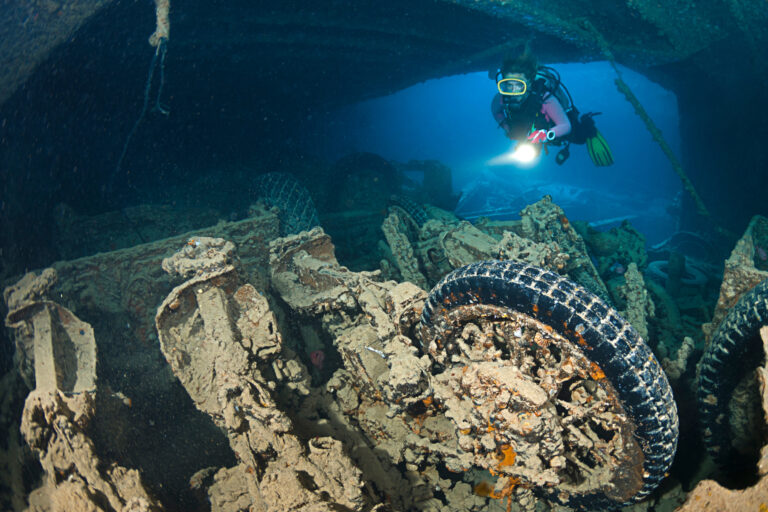
Exploring the inside of the ship
RULES TO FOLLOW WHEN YOU GO DIVING IN EGYPT
1.
Respect the wildlife: You should always keep well away from any wildlife you encounter in the water – that includes sharks, dolphins and turtles. Never try to touch them, chase them, or ride them (yep… there are people who would try that). Let them approach you if they are curious, but you’ll probably find that they’re not bothered.
2.
Don’t use camera flash: This applies to taking photos of any animal, whether that’s on land, in the ocean, or at a zoo/aquarium. Flash photography can disturb and scare away wildlife. So switch off the the flash on your phone before you pop it in its waterproof case, and make sure you know how to do it for any other equipment, such as your GoPro too.
3.
Avoid wearing sunscreen: Caring for your skin is important. But if you’re going to go diving in Egypt you need to stay clear of the sunscreen or make sure you choose reef safe sunscreen that’s 100% biodegradable! Coral reefs are dying, species are disappearing at an alarming rate, and whilst this isn’t entirely down to your choice of sun protection, the chemicals in sunscreen are super hazardous to ocean wildlife. Wear a t-shirt instead!
You shouldn’t use any other oils or lotions either. Scientists say that environmental contaminants in your favourite skincare products can be just as damaging!
4.
Be respectful of the environment. Help to conserve the biodiversity and beauty of the reef. Don’t litter and collect any trash that you do see in the water to take back and dispose of. Never collect anything from the reef, such as shells or coral, as a souvenir. As the saying goes, ‘leave only footprints and take only photos’
5.
Be aware of your buoyancy. The Thistlegorm is fascinating and it’s easy to bump around, damaging the wreck and potentially yourself. Always practice good buoyancy and be aware of your surroundings on any dive.
WHAT TO PACK WHEN YOU GO DIVING IN EGYPT
Swimwear: You’re going swimming, so best pack your swimsuit!
Dive gear: your dive equipment is usually provided by the dive shop but if you have your own gear, feel free to bring it!
Top tip: it sounds gross, but if you spit in your goggles and then rinse them afterwards, it’ll stop them from fogging up!
Towel: Sitting around all day in a wetsuit is uncomfortable. Bring a towel so that you can dry off between dives.
Camera: You’ll want a GoPro or similar underwater camera to capture memories of all the incredible wildlife you’ll encounter!
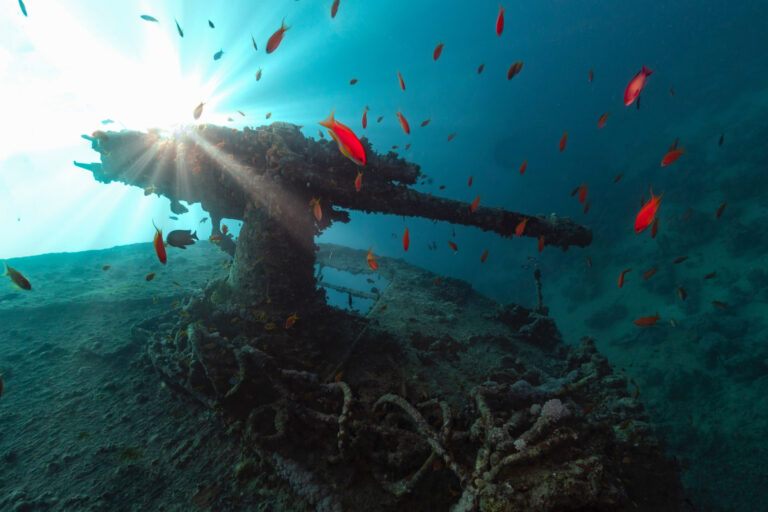
IS DIVING THE THISTLEGORM WORTH IT?
In a word: absolutely.
The SS Thistlegorm is up there with the world’s best wreck dives, and it really is a special experience. Understanding the history behind what you’re about to visit, and then actually living it through your dive, is insane.
Diving the Thistlegorm is one of the best dive trips I’ve ever done. If you’re in Egypt, and you can afford it, don’t skip it! It’s 100% worth it.
LIKE IT? PIN IT!
SAVE THIS POST TO YOUR PINTEREST BOARD TO COME BACK LATER
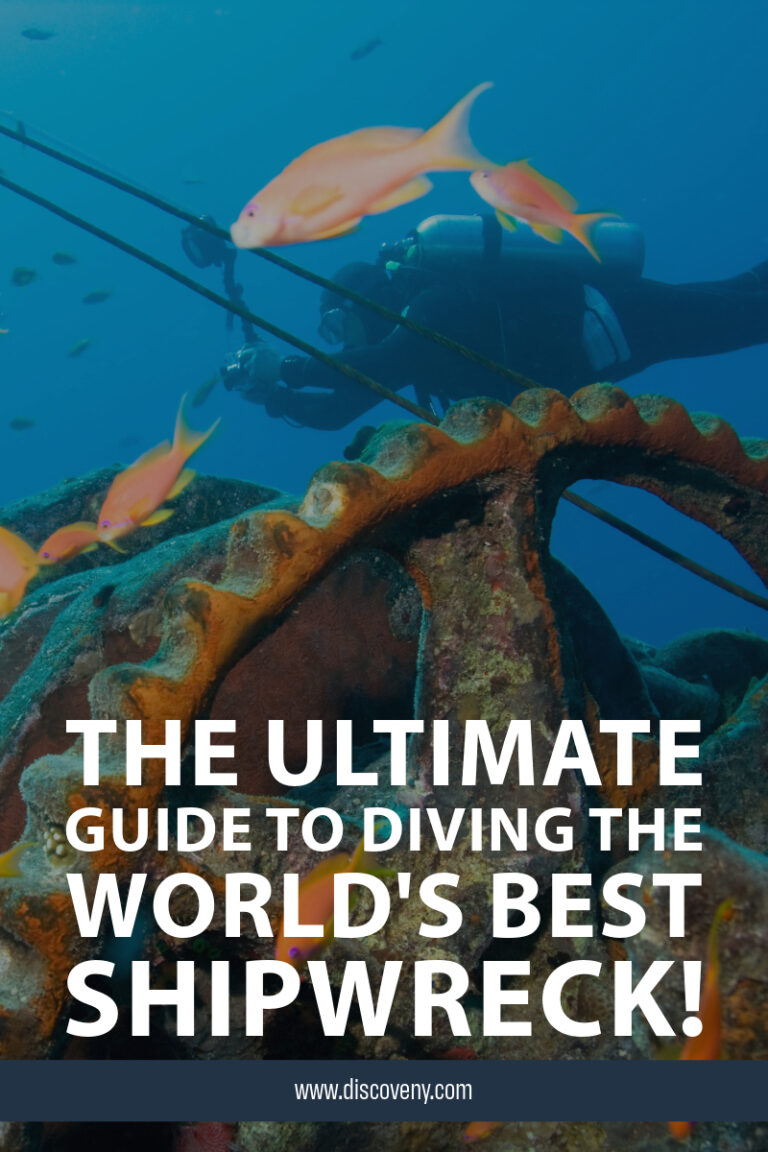

Follow our daily adventures on Facebook and Instagram
Disclaimer: The information and advice provided in this blog are the author’s opinions and based on their personal experiences. All information was accurate at the time of writing. However, things can change quickly, so always double-check current conditions and guidelines before setting out. Remember, your travels and safety are your own responsibility, and this blog can not be held responsible for anything that might happen on your adventures! Always exercise caution and good judgment. Oh, and don’t forget to get travel insurance! Happy travels!
This post may contain affiliate links (yay for transparency!) This means that I will earn a small commission, at no additional cost to you, if you click the link and choose to buy the product. I only link to stuff I have personally bought and found useful and never endorse crap. Your support helps keep the site going, thank you!
Alice
Alice is a UK travel blogger who advocates sustainable travel and being more eco-conscious on a budget. She loves coffee, her houseplants and summiting mountains.
You May Also Like
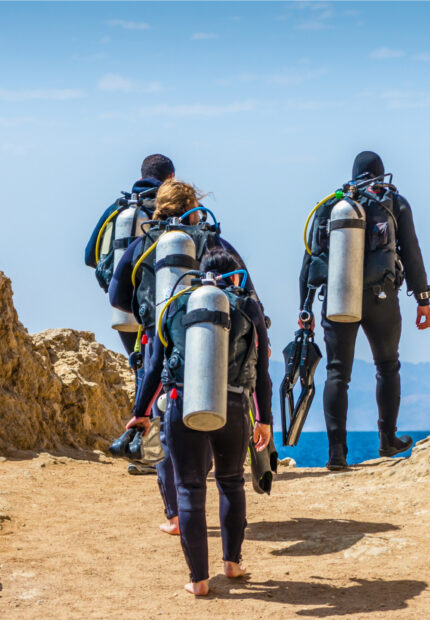
Sharm el Sheikh VS Dahab: Where’s best in Egypt for your Red Sea diving?
June 22, 2024
Travelling to Egypt during Ramadan: What to Expect?
June 8, 2024